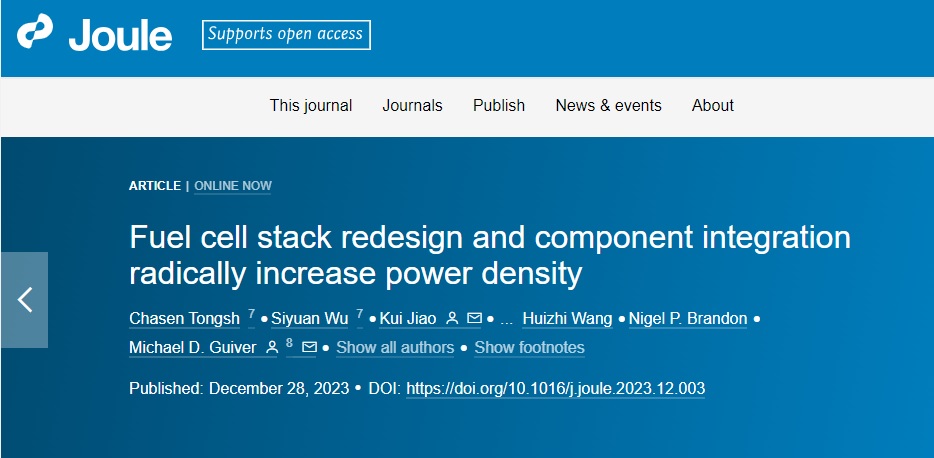- Islamabad
- 32.5°C
- Today ( Saturday, 7 June 2025)
- Home
- Innovations
- Chinese Scientists Achieve Remarkable Leap in Fuel Cell Technology with Ultra-High Power Density Breakthrough
Chinese Scientists Achieve Remarkable Leap in Fuel Cell Technology with Ultra-High Power Density Breakthrough
Chinese scientists, under the leadership of Professor Jiao Kui from Tianjin University's School of Mechanical Engineering, have successfully developed a proton exchange membrane fuel cell boasting an ultra-high volumetric power density. This achievement surpasses mainstream counterparts by more than 80 percent. The research team implemented a redesign of the proton exchange membrane fuel cell's architecture, introducing new components and optimizing gas-water-electric-heat transfer routes. The result is an ultra-thin and ultra-high power density fuel cell that utilizes an innovative approach. Traditional gas diffusion layers and flow channels were replaced with an ultra-thin carbon nanofiber film produced through electrospinning technology and metal foam. This groundbreaking development led to a substantial 90 percent reduction in the thickness of the membrane electrode assembly and an 80 percent reduction in mass transfer losses attributed to reactant diffusion. As a result, the volumetric power density of the fuel cell nearly doubled. The research team estimates that the peak volumetric power density of the fuel cell stack, employing the new structure, will reach an impressive 9.8 kilowatts per liter. While hydrogen fuel cells are recognized as a promising technology in the realm of hydrogen energy, enhancing their volumetric power density has presented a significant technical challenge. This achievement not only provides essential guidance for advancing proton exchange membrane fuel cell technology but also marks a substantial leap forward in the realm of clean energy. The research findings, detailing this significant breakthrough, were published in the internationally respected energy research journal Joule on December 28, 2023.
-
In the ever-evolving landscape of entertainment, gaming culture has emerged as a dynamic force, captivating a global audience and shaping modern leisure experiences. The gaming community, once perceived as niche, has now blossomed into a diverse and inclusive realm, welcoming ...
-
K2, often referred to as the "Savage Mountain," stands tall as the second-highest peak on Earth, a formidable and awe-inspiring presence in the Karakoram Range of the Himalayas. Rising to an elevation of 28,251 feet (8,611 meters), K2 is renowned for its challenging and perilo...
Get Newsletter
Subscribe to our newsletter to get latest news, popular news and exclusive updates.


























Facebook Comments